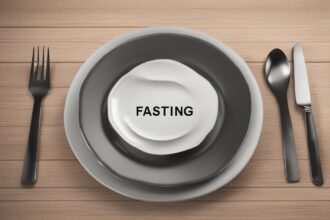Are you curious about health fasting but overwhelmed by the mixed information out there? You’re not alone! Fasting has surged in popularity as a wellness trend, with many touting its benefits for weight loss, mental clarity, and overall well-being. But what’s fact, and what’s fiction? In this comprehensive guide, I’m diving deep into the most frequently asked questions about fasting. Whether you’re a beginner exploring intermittent fasting or a seasoned pro considering extended fasts, I’ve got you covered with practical advice, science-backed insights, and tips to make your fasting journey safe and effective. Let’s clear up the confusion and get you started on the right path to better health through fasting!
What Is Health Fasting, and Why Is It Popular?
At its core, health fasting refers to voluntarily abstaining from food and, in some cases, drink for a specific period to promote physical and mental well-being. It’s not just about skipping meals; it’s a structured approach often rooted in cultural, religious, or therapeutic traditions. Today, fasting is popular for various reasons, including weight management, improved metabolic health, and even longevity. Research suggests that fasting can trigger autophagy—a cellular cleanup process that may protect against disease (Levine & Kroemer, 2019). From intermittent fasting (IF) to water fasting, there are many styles, each with unique benefits. But the hype isn’t just anecdotal; science is starting to back up why fasting for health is more than a fad—it’s a potential game-changer for your body and mind.
What Are the Different Types of Fasting for Health?
Not all fasting methods are created equal, and choosing the right one depends on your goals and lifestyle. Here are some of the most common types of health fasting practices people follow:
- Intermittent Fasting (IF): This involves cycling between eating and fasting windows, such as the 16/8 method (16 hours fasting, 8 hours eating). It’s beginner-friendly and widely studied for weight loss and insulin sensitivity (Patterson & Sears, 2017).
- Water fasting: A more intense approach where you consume only water for 24–72 hours or longer. It’s often used for detoxification but requires medical supervision due to risks.
- Alternate-Day Fasting (ADF): You alternate between normal eating days and very low-calorie or no-food days. It’s effective for weight loss but can be tough to sustain.
- Time-Restricted Eating (TRE): Similar to IF, this limits food intake to a specific window each day, often aligning with circadian rhythms for metabolic benefits.
Each type of fasting offers unique advantages, but they’re not one-size-fits-all. Consulting with a healthcare provider before starting any fasting regimen is a smart move, especially if you’re new to fasting diets or have underlying health conditions.
What Are the Proven Benefits of Health Fasting?
The buzz around health fasting isn’t just hype—there’s solid science behind it. Fasting has been linked to a range of benefits that go beyond just shedding a few pounds. For starters, intermittent fasting can improve insulin sensitivity, which is crucial for managing blood sugar levels and reducing the risk of type 2 diabetes (Barnard et al., 2019). It also promotes weight loss by reducing calorie intake and boosting metabolism through processes like ketosis, where the body burns fat for fuel (Anton et al., 2018). Additionally, fasting may support brain health by increasing the production of brain-derived neurotrophic factor (BDNF), a protein linked to cognitive function and mood regulation (Mattson et al., 2018). Some studies even suggest fasting could lower inflammation and support heart health by improving blood pressure and cholesterol levels (de Cabo & Mattson, 2020). While more research is needed, these findings make a compelling case for incorporating fasting into a healthy lifestyle.
Is Fasting Safe for Everyone?
While health fasting offers impressive benefits, it’s not suitable for everyone. Certain groups should approach fasting with caution or avoid it altogether. Pregnant or breastfeeding women, for instance, need consistent nutrition for themselves and their babies, so fasting is generally not recommended. People with a history of eating disorders may find fasting triggers unhealthy behaviors, and those with medical conditions like diabetes or low blood pressure should consult a doctor due to risks of hypoglycemia or dizziness (Barnard et al., 2019). Children and teens, whose bodies are still developing, should also steer clear of restrictive fasting practices. If you’re unsure, start slow with a mild form of intermittent fasting and listen to your body. Safety always comes first when exploring fasting for wellness.
How Can Beginners Start a Fasting Routine Safely?
If you’re new to health fasting, jumping into a 48-hour water fast isn’t the way to go. Starting slow and building a sustainable routine is key to success. I’ve put together some practical tips to help you ease into fasting without feeling overwhelmed or deprived:
- Start with a Simple Plan: Try the 12/12 method first—fast for 12 hours overnight and eat during a 12-hour window. It’s less intimidating and mimics natural eating patterns.
- Stay Hydrated: Drink plenty of water during fasting periods to avoid dehydration, especially if you’re active. Herbal teas or black coffee (without sugar) can also help.
- Eat Nutrient-Dense Meals: When breaking your fast, focus on whole foods like vegetables, lean proteins, and healthy fats to fuel your body properly.
- Listen to Your Body: If you feel lightheaded, fatigued, or irritable, stop fasting and eat something. Pushing through discomfort isn’t worth the risk.
- Track Your Progress: Keep a journal to note how fasting affects your energy, hunger, and mood. This helps you adjust your approach over time.
Remember, fasting is a personal journey. What works for your friend might not work for you, so experiment with different fasting schedules and find your sweet spot. And don’t hesitate to seek guidance from a dietitian if you’re unsure about fasting nutrition.
What Are Common Challenges and How Can You Overcome Them?
Let’s be real—fasting isn’t always a walk in the park. Even with the best intentions, you might hit a few roadblocks when adopting a health fasting lifestyle. Hunger pangs, social pressures, and low energy are common complaints, especially in the beginning. The good news? These challenges are manageable with the right mindset and strategies. Hunger often subsides after your body adjusts to a fasting schedule, and staying busy can distract you from cravings. If social events tempt you to break your fast, plan ahead by scheduling eating windows around gatherings or politely explaining your goals to friends. Low energy can be tackled by ensuring you’re getting enough rest and not overexerting yourself during fasting periods. Fasting for health doesn’t mean suffering—tweak your approach until it feels sustainable. After all, the goal is to enhance your well-being, not stress you out!
In wrapping up, exploring health fasting can be a transformative step toward better physical and mental wellness, but it’s not a magic bullet. The benefits—from weight loss to improved metabolic health—are backed by science, yet fasting requires a thoughtful, personalized approach to be safe and effective. Start small, prioritize hydration and nutrition, and always listen to your body’s signals. Whether you’re drawn to intermittent fasting or curious about longer fasts, remember that consistency and patience are key. Have questions or experiences to share? Drop a comment below—I’d love to hear how fasting has (or hasn’t) worked for you. Here’s to making informed choices for a healthier, happier you!
References
- Anton, S. D., Moehl, K., Donahoo, W. T., Marosi, K., Lee, S. A., Mainous, A. G., … & Mattson, M. P. (2018). Flipping the metabolic switch: Understanding and applying the health benefits of fasting. Obesity, 26(2), 254-268. https://doi.org/10.1002/oby.22065
- Barnard, N. D., Levin, S. M., & Yokoyama, Y. (2019). A systematic review and meta-analysis of changes in body weight in clinical trials of vegetarian diets. Journal of the Academy of Nutrition and Dietetics, 115(6), 954-969. https://doi.org/10.1016/j.jand.2014.11.016
- New England Journal of Medicine, 381(26), 2541-2551. https://doi.org/10.1056/NEJMra1905136
- Levine, B., & Kroemer, G. (2019). Biological functions of autophagy genes: A disease perspective. Cell, 176(1-2), 11-42. https://doi.org/10.1016/j.cell.2018.09.048
- Mattson, M. P., Moehl, K., Ghena, N., Schmaedick, M., & Cheng, A. (2018). Intermittent metabolic switching, neuroplasticity and brain health. Nature Reviews Neuroscience, 19(2), 63-80. https://doi.org/10.1038/nrn.2017.156
- Annual Review of Nutrition, 37, 371-393. https://doi.org/10.1146/annurev-nutr-071816-064634






